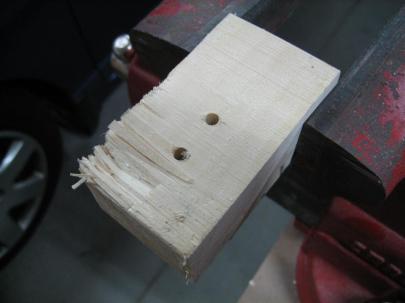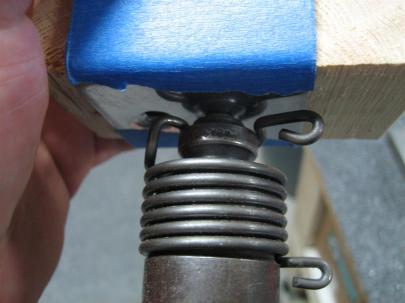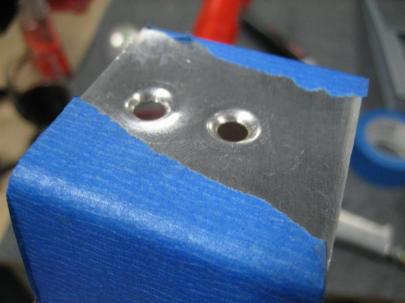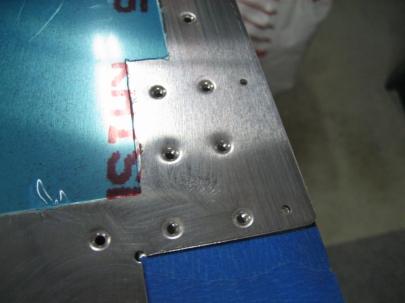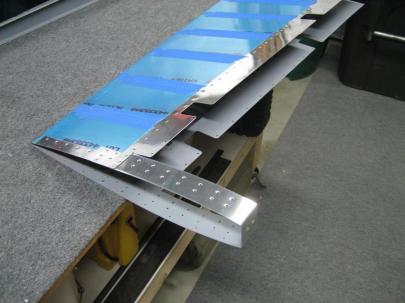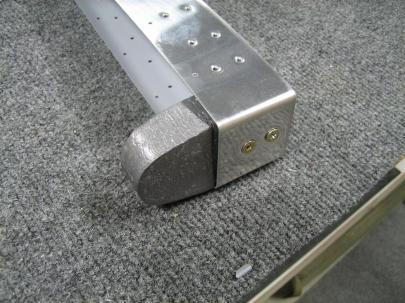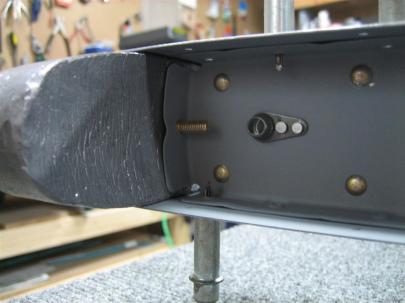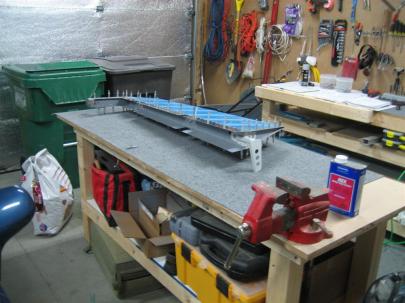Well, after deciding not to work out tonight (in favor of wine), I made it out to the garage pretty late for some final prep work before riveting the right elevator.
On with the building, you say? Fine.
One of the last real fabrication items I have left on the right elevator was enlarging the counterbalance skin dimples. To make a long story short, I don’t have #10 dimple dies, so I dimpled with #8, and then planned on using the AN507 screw head and a nut tightened down to enlarge the dimple enough for the screw to sit flush.
This did not work.
Okay, instead of waiting for a week for a $40 dimple die to arrive, let’s be creative.
Plan: matchdrill two holes in a block of wood, countersink the holes, then use a flush set to enlarge the dimples.
Well, I don’t really have any good pictures of my attempt, because that didn’t work either, and I was getting frustrated.
Finally, I told the girlfriend to come out and listen to me explain the problem. (I knew this would help me come up with a solution.)
Without even flinching. “Why don’t you use a bigger screw to make your dimple?”
my face = <deer in the headlights>
Of course! (Except I didn’t have a bigger countersunk crew, but it set me down the right path.)
Okay, let’s move on. Next up, I needed to locally bevel the edges where the spar and tip rib are underneath the counterbalance rib (so the top skin doesn’t show the transition bulges. So I marked those, and also started thinking about how to attach these empennage tips. See the two undimpled holes to the right? Those are two (well, 4, two on top and two on bottom) tip attach points that will eventually be drilled, deburred, and dimpled. Might as well do it now so I don’t have to worry about deburring between riveted sheets.
I flipped the pieces over and drilled them to #30.
After dimpling…this #6 screw fits pretty well. (Editorial note: I’m pretty locked in to attaching the elevator tips with screws. I know there is really no reason to take the tips off, but right now, I don’t want to commit to blind rivets.)
Once the other side was done, I primed the interior (and taped off exterior) side of the counterbalance skin.
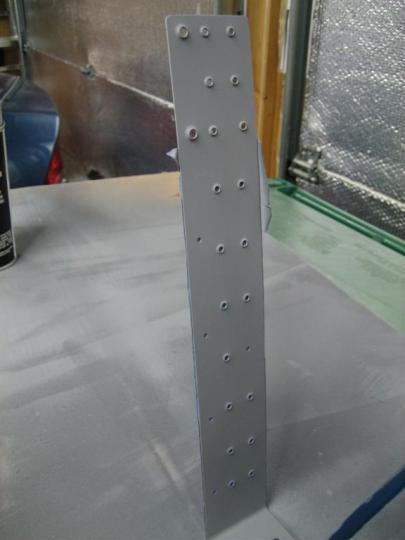
Priming. You can see the two #6 dimples at the top of the left side of the skin. (I'll do the rest later...the rest are all accessible in the future.)
While that dries…let’s devinyl!
Back to emp tip attachment, here are the #6 holes in the skin, dimpled the same way as the counterbalance skin.
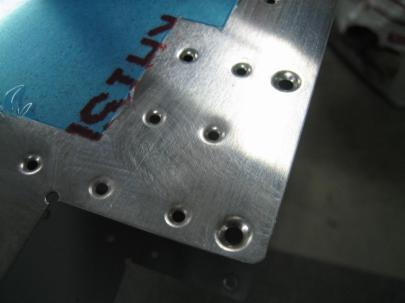
Nice big dimples. (Whoa, I forgot to deburr that relief hole on the left there. Fixed after picture taken.)
Let’s get this thing clecoed together.

Those big dimples sit nicely in each other. Here you can see those two holes are the only holes that overlap.
Next, the manual has you rivet the following two holes (not accessible once the spar and tip ribs are in place).
Next, “loosely place” the counterbalance in the counterbalance skin and “partially” insert the screws.
last, but not least, they have you insert the skeleton in the skin and cleco together.
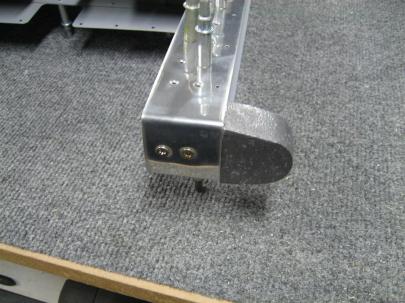
Those screw heads are pretty flush. (They are not tight yet, so they'll sit a little better once I get them tightened down.)
A couple pictures of some of the interfaces.

Inside corner of the counterbalance rib. (What's that stuff hanging from the top edge? I'll have to investigate later.)
1.5 hours, 4 flush rivets set.

